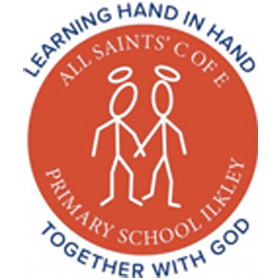Phonics and Reading
At All Saints’, we have designed an early reading curriculum to ensure children become confident and fluent readers. It is our intent to nurture enthusiastic and motivated readers who will develop a lifelong love of reading. Phonics is a vital part of this reading journey and provides children with the tools to become skilled readers.
Alongside the important skill of decoding, we teach children how to comprehend and understand what they are reading. We aim for all children to have strong word recognition skills, a rich vocabulary and good comprehension skills. Our expectation is that all children will be fluent readers by the end of Year 2. At All Saints’, we want our children to learn to read quickly and effectively. This is why we teach reading through Little Wandle Letters and Sounds Revised, which is a systematic and synthetic phonics programme. We start teaching phonics in Reception and follow Little Wandle Letters and Sounds Revised progression, which ensures children build on their growing knowledge of the alphabetic code, mastering phonics to read and spell as they move through school.
As a result, all our children are able to tackle any unfamiliar words as they read. We also model the application of the alphabetic code through phonics in shared reading and writing, both inside and outside of the phonics lesson and across the curriculum. We have a strong focus on language development for our children because we know that speaking and listening are crucial skills for reading and writing in all subjects.
We value reading as a crucial life skill. By the time children leave us, they read confidently for meaning and regularly enjoy reading for pleasure. Our readers are equipped with the tools to tackle unfamiliar vocabulary. We encourage our children to see themselves as readers for both pleasure and purpose.
Phonics in Foundation Stage and Key Stage 1
In Reception and Year 1, phonics is taught daily. Staff systematically teach the relationship between each phoneme (sound) and the corresponding grapheme (letter). The focus is placed on recognising these quickly so children can then start to read words by blending the sounds together and segmenting them in order to spell. In addition, they learn to read by sight a range of high frequency and common exception words. They then progress on to learning combinations of letters such as digraphs (two letters to make one sound) e.g. ‘ck’ ‘oo’, ‘sh’ and trigraphs (three letters to make one sound) e.g. ‘igh’ and ‘air’. In Year 1, children will learn new graphemes for phonemes they already know e.g. ‘a’ as ai/ay/a/a – e, as well as alternative pronunciations for the graphemes they already know e.g. cow/ snow. They are also taught the Common Exception Words (i.e. words that are not phonetically consistent – e.g. was, said) for Year 1 and 2 set out in the National Curriculum. From Year 2 onwards, children consolidate their knowledge and learn different spelling rules and when to apply them.
Reading in Foundation Stage and Key Stage 1
We teach children to read through reading practice sessions three times a week.
These sessions:
· are taught by a fully trained adult to small groups of children
· use books matched to the children’s secure phonic knowledge using the Little Wandle Letters and Sounds Revised assessments and book matching grids.
· are monitored by the class teacher, who rotates and works with each group on a regular basis. Each reading practice session has a clear focus, so that the demands of the session do not overload the children’s working memory.
The reading practice sessions have been designed to focus on three key reading skills:
· decoding
· prosody: teaching children to read with understanding and expression
· comprehension: teaching children to understand the text.
In Reception these sessions start in Week 4. Children who are not yet decoding have daily additional blending practice in small groups, so that they quickly learn to blend and can begin to read books. In Year 2 and 3, we continue to teach reading in this way for any children who still need to practise reading.
Statutory assessment of reading
Children in Year 1 undertake a Phonics Screening Check. Any child who does not reach the expected standard is given additional support throughout Year 2 before undertaking the Check again at the end of Year 2. See the links below to examples of words that the children are expected to read at the end of Year 1.
